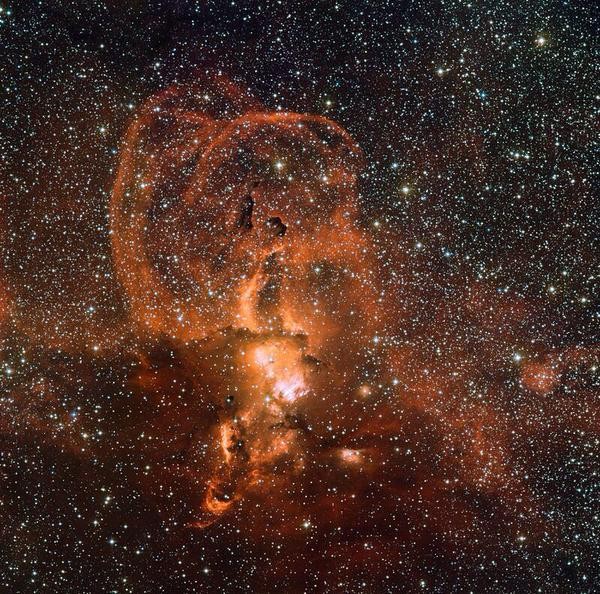Astronomers witnessed a cosmic "champagne flow" of stars as it blows away the hydrogen gas around it.
Images were captured using Very Large Telescope (VLT) of European Southern Observatory's (ESO) in Chile, Space reported. Astronomers used the term "champagne flow" because the stars have left behind some bubbles around it.
The image has shown red cloud of glowing hydrogen gas behind a group of blue foreground stars. RCW 34 nebula’s brightest region is the place where young stars heat the gas and expands it by the surrounding cooler gas. When this gas stretches up to the borders of the gas cloud, it will explode into the space, forming a "champagne flow" pattern.
ESO press release stated that RCW 34’s young star-forming region offers may scenarios of star formation within the same cloud, according to University Herald.
RCW 34 is situated in the southern constellation of Vela, which is the group of massive young stars that is hidden in the brightest region of the cloud. These stare affect the nebula and when the gas is exposed to UV radiation, it become ionized, letting the electrons leave the hydrogen atoms.
Out of collapsing gas clouds, stare are born and it is plentiful in gaseous region such as RCW 34. Researchers speculate that there may be numerous star formation bursts and the oldest stars are on the middle part that represent the first wave.
ESO statement said the color indicates that there have been many young stars in the region with only a fraction of masses that of the sun. It appears that it gathers around older and more massive stars located in the center, while others are allocated in the edgy areas.



























